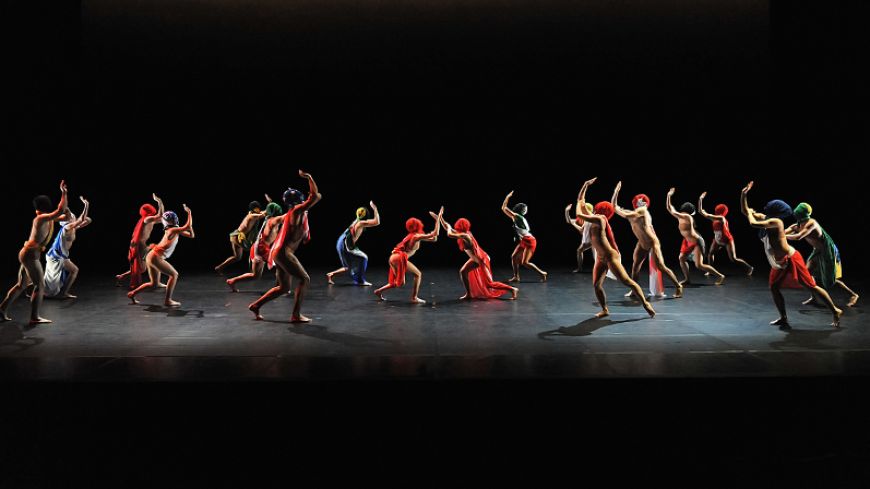
For Angelin Preljocaj, the key word in any artistic endeavour is ‘collaboration’, his priority ‘change’. His desire never to replicate his inspiration, to challenge himself, to ‘learn something I don’t know’, has led him to study different forms of dance with the very best in the world.
He began with classical ballet but, finding it ultimately too restricting, in the late 1970s he turned to contemporary dance and Karin Waehner. He began the next decade in New York, working at Merce Cunningham’s studio. By the end of the decade he had studied Noh in Japan and had formed his own dance company back in his native France.
Fast forward to 2010, with many award winning choreographies by now behind him, and he is invited to produce one of his existing choreographies using the dancers from the Bolshoi. Typically, Preljocaj identifies this as an exciting collaborative opportunity and, “And then, one thousand years of peace” is born, using 10 Bolshoi dancers and 10 from his own company.
The inspiration for this piece was the Apocalypse from the book of Revelation, although in the programme notes he warns against looking for direct symbolism relating to the text. His work is never that simple. Instead, Preljocaj has explored a more literal meaning of ‘Apocalypse’: ‘apo’, to lift and ‘calypsis’, veil; he means to expose what is buried deep in our existence, our ‘fears, anxieties and hopes.’
It was an extraordinary and challenging piece, with so many cutting-edge artistic elements brought together it was as if Preljocaj had harvested the world and served it all up in one daring dish. The music by French DJ Laurent Garnier began louder than any nightclub and from there ratcheted up to an almost unbearable volume, jerking into more gentle tones just when you thought you couldn’t stand it any more. The set, lighting and costumes were also startling and memorable, but with a similar residual feeling of threatening unease. The dancers performed the demanding and intense choreography to perfection.
As for symbolism, well, there were scenes of heavenly beauty and hellish monstrosity. There were dancers dressed in flags, faces covered, creating tableaus of explicit group-sex acts; two girls dressed in bright white shifts performing balletic moves of grace and purity, that ended with blood oozing down one arm of each onto a silver tray; figures clad all in black, cackling as they posed dead bodies in various positions up against a wall.
In the final scene, the flags of 40 different nations were washed in sinks that appeared along the backdrop, the dancers spraying and soaking the stage area before draping each flag carefully on the floor. All the dancers then stood around the edge of the space while a male and female, dressed in white, carried in two live lambs, bleating loudly, laying them down to explore the newly-washed flag flooring.
It was impossible not to interpret some of the scenes played out, and some were just impossible to interpret. This was hard work, not easy on any level. It is not ‘enjoyable’, it is not easy-listening or easy-watching. It is, however, challenging and stimulating, it jolts you right out of your comfort zone, and if this is what you want from a piece of theatre, then this is definitely for you.
Show times: 17th – 19th August, 7.30pm
Prices: £30 £27 £22 £17 £12 £10

